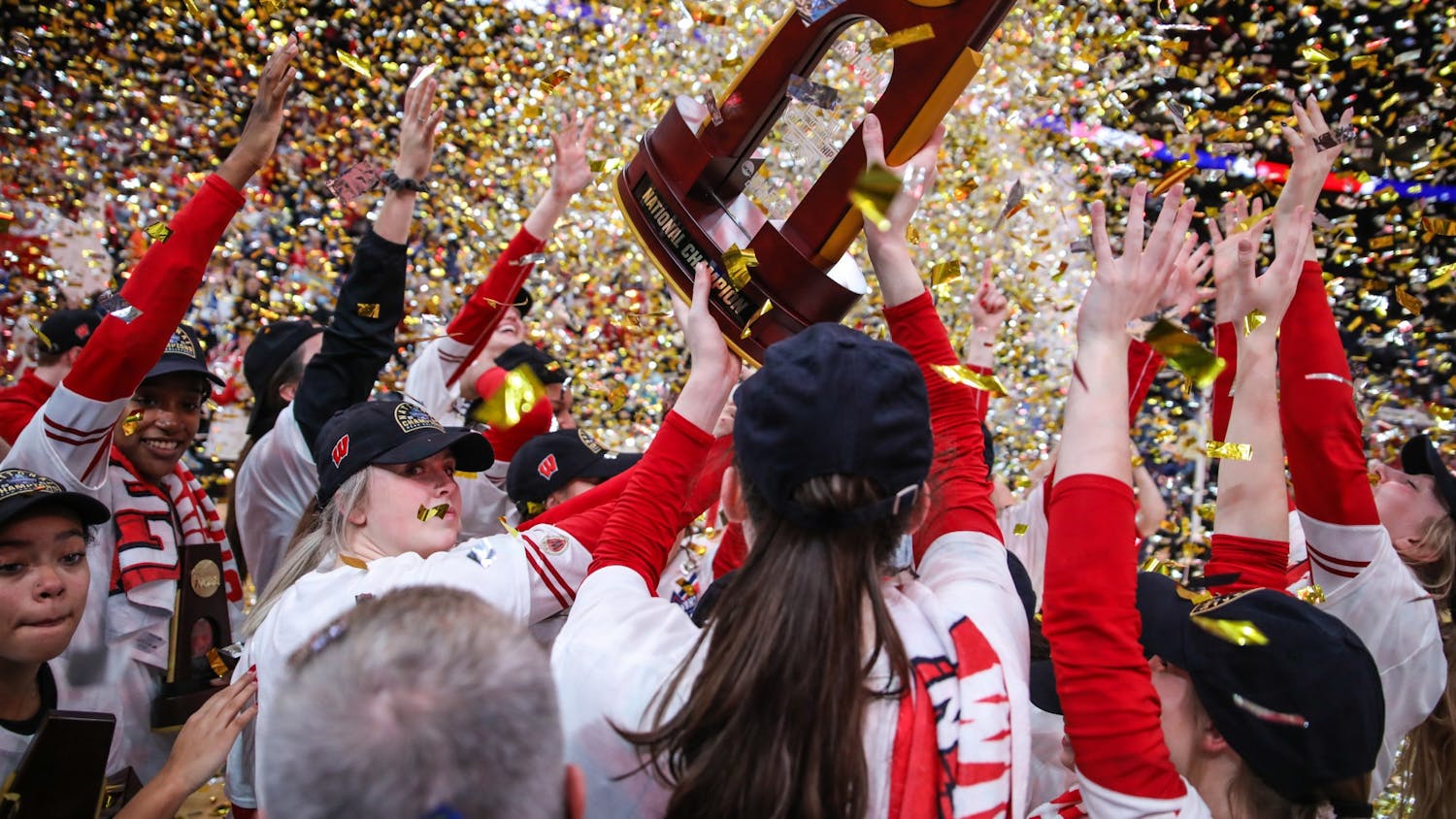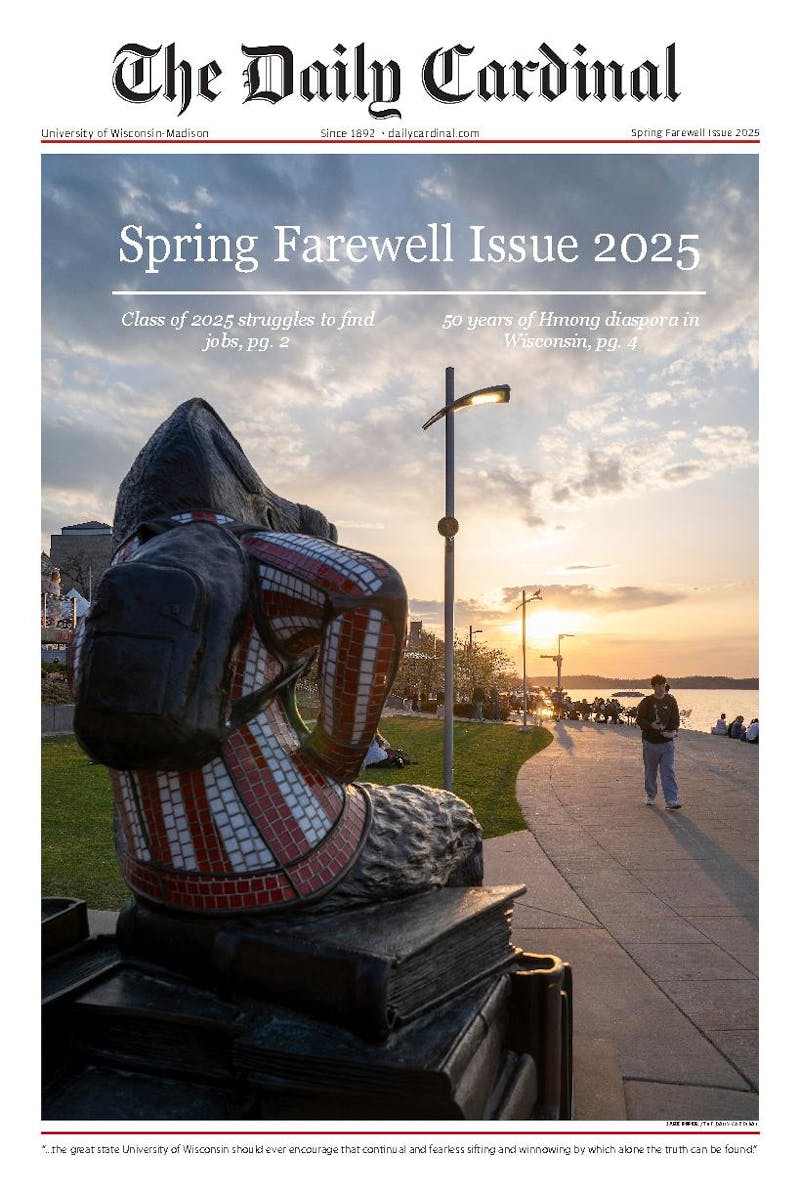I watched plenty of Badger basketball this season. A turbulent year full of losing streaks, injuries and only occasional bounce-back wins saw Wisconsin finish at a mediocre 20-16 (9-11 in the Big Ten).
Most games, both wins and losses, were decided by fine scoring margins. In fact, I would have likely developed heart problems if I had to watch Wisconsin play in March Madness because of their inability to take leads despite keeping it close.
As we move into the offseason, here are the biggest questions likely floating around Wisconsin men’s basketball, and my take on each.
How did Wisconsin miss the tournament following their success last year?
The Badgers found success last season with a Big Ten regular season title and a No. 3 in the NCAA Tournament. It was in stark contrast to this year, when the Badgers finished 11th in the regular season, flunked out of the Big Ten Tournament in their first game, missed the NCAA Tournament and lost in the NIT Final Four.
There’s no question that a large part of the drop-off resulted from the Badgers who left after the 2021-22 season. Johnny Davis, the All-American and top-10 NBA Draft pick, averaged close to 20 points per game last season. Brad Davison, the fifth-year senior and leader of the team, averaged 14 points and led the Badgers’ defense. Chris Vogt, the seven-foot senior, led the team in offensive rebounds and blocks.
With those three key losses, the Badgers clearly struggled to fill the gaps. There was no Johnny Davis who could score with ease and no veteran with the grit of Davison. The Badgers also struggled tremendously on the boards this season — a partial result of Vogt’s departure.
These departures, alongside a fairly shallow bench — Coach Greg Gard’s rotation usually consisted of no more than three bench players a game so long as foul trouble was not a factor — damaged Wisconsin all season long. General inexperience — two underclassmen in the starting lineup and only one senior on the team — and other internal problems mentioned later in this column also contributed to their eventual 11th place finish in the conference.
That’s not to mention the Big Ten gauntlet every conference team ran through this season.
“Don’t ask me if I know how to figure out [the Big Ten]. It’s crazy,” Gard said after a win in February.
Is Gard on the hot seat?
Turmoil in the coaching room was a common theme in Wisconsin athletics this academic year. Football and men’s hockey both fired their head coaches, and after finishing under .500 in the Big Ten, many fans speculated — or demanded — that Gard be next. While it is true that this is only the second season a Gard-led Badger team missed the tournament, it does not seem as though he is on his way out — yet.
Gard has a lot to prove next season, but he has what he needs to do so. Returning all but one player from this season’s roster, plus potential transfer portal players and incoming freshmen, should provide Gard with all of the pieces he needs to get back to the Wisconsin basketball of the past few seasons.
That being said, University of Wisconsin-Madison Athletic Director Chris McIntosh has made some sudden and surprising changes recently. So, I’m not even sure about Gard’s chances as I write.
Why were there so many close games? Will they continue next season?
The Badgers finished with a mere 1.7 scoring margin, meaning any average game was decided by less than two points. Almost every game was close, even when the final scoreboard didn’t show a win. That was reflected by countless late game choke-jobs, especially on the offensive end, thanks to failed last-minute plays, timeouts and missed “hero” shots.
Most notably, against Nebraska, Wake Forest and Northwestern, there were far too many instances of “hero ball” in late game situations — when a player took an objectively terrible shot or tried to make the wrong “heroic” play to win the game. Unfortunately, Chucky Hepburn headlined many of these game-losing situations with deep 3-pointers or fadeaway jumpers at the buzzer that often ended up being the last chance at a bucket in these games.
Outside of these hero-ball instances, the Badgers managed to turn the ball over at crucial points throughout the season in late-game scenarios. Most recently, Wisconsin had the chance to sink a buzzer-beater on North Texas with the final possession of the game, but instead dropped the ball on the floor and watched it roll away in the final seconds of the game.
The season-ending turnover was one of many crucial turnovers throughout the season, which is shocking considering Wisconsin only turned the ball over 8.6 times a game on average — good for second in the Big Ten and 27th in the nation. The unfortunate reality is that the turnovers seemed to happen at the worst possible times.
If the Badgers hope to improve, the offense must undergo some much needed late game situation fine-tuning.
Where did the offense go in many of the second halves this season?
Everyone knows the team let too many leads slip away in the second half, especially in the final game against North Texas, where Wisconsin scored 13 points in the entire second half. This was just one example of many throughout the season where the Badgers endured long scoring droughts in the second half.
When the inevitable drought hit almost every game, the Badgers’ offense often looked lost and confused as to how they could break out of their slump. Usually, Hepburn would hit a 3-pointer or Steven Crowl would make it to the free throw line to create any sort of offense. But, these droughts — some of them lasting over five minutes — killed any second-half lead or helped the opponent create a wide enough deficit to close Wisconsin out.
Why did the defense lack consistency this season?
For years, Wisconsin basketball has been known for their gritty defense that traveled throughout the Big Ten. In the midst of an 11-2 start to the season, the Badgers held teams like Dayton, Kansas, USC and Maryland to under 70 points each. However, once true Big Ten play began, the defense took a hit.
Of course, playing in the Big Ten is usually a challenge. But as soon as the Badgers faced conference opponents, they began allowing teams like Illinois, Penn State, Nebraska, Maryland and Michigan to exceed the 70 point mark with ease. This is just one metric to measure the defensive decline.
Simply watching the Badgers, especially when they endured their offensive droughts, was enough to understand that the defense certainly did not maintain through the second half of the season.
Who were this season’s unsung heroes?
The few bench players who did earn minutes this season were undoubtedly essential, as Carter Gilmore, Kamari McGee and Jordan Davis all played pivotal roles.
Gilmore’s defensive presence earned him high praises, especially in games like the home win against Michigan when he was tasked with helping guard the rotation of Hunter Dickinson and Terrance Williams II.
McGee backed up Hepburn for the majority of the season, eventually falling into favor over Isaac Lindsey. His calm presence at the point, paired with his ability to score if needed, and defensive poise allowed the first year Badger to earn important minutes.
Jordan Davis, despite losing his starting spot to Connor Essegian, still averaged over 20 minutes a game. His passing vision and 3-point shooting often drew credit in stopping scoring droughts or boosting the Badgers into momentum.
Will Wisconsin improve on the glass? How so?
It’s no question that the Badgers were beat up on the boards. A rebounding margin of -3.4 on the season put them dead last in the Big Ten and 317th out of 352 NCAA Division I teams this season. Even with the likes of a seven-foot Crowl, 6-foot-9-inch Wahl and 6-foot-7-inch Gilmore, the Badgers still gave up over 35 rebounds a game.
Any team that gives up over 30 rebounds a game will struggle to find themselves in the win column, and, to me, this was the most glaring issue all season alongside free throw shooting — 69% on the season.
Gard will certainly stress rebounding before next season, but the incoming class — more on that later — will bring some additional height that will hopefully contribute to next season’s rebounding.
What happened to the once-roaring Kohl Center crowd?
The Kohl Center has been a fortress in the Big Ten since its opening in 1998. The Badgers have recorded some legendary wins at the Kohl Center, like taking down undefeated Ohio State In 2011 and sealing the Big Ten title against Purdue in 2022. The student section and Badger faithful of all ages are known to show out to support the team year after year.
This season, however, felt different. Yes, the student section still filled all three levels for most home games, but beyond that, empty seats littered the arena throughout the season. Plus, the sound and energy from the crowd was equivalent to that of College Library at times, especially deeper into the season.
There’s no doubt home teams feed off the energy of their crowd, and the Badgers certainly missed out on some of the passion their fans have given them for years. Still, Wisconsin averaged 13,200 fans per home game, which was sixth best in the Big Ten this season. It’s important to note, though, that this season’s number is about 3,000 fewer than last season — the Badgers recorded a Big Ten-best average of 16,500 fans in 2022.
What’s in store for next season?
As mentioned above, Gard is returning every player from this season’s roster except for Jordan Davis, who entered the transfer portal a few weeks after the end of the Badgers’ season. While this is certainly a tough loss for Wisconsin, Davis fell out of favor at the hands of Essegian in terms of minutes.
Within the same few days, though, Wahl announced his return to the program as a fifth-year senior, citing an “unfulfilled feeling.” This is a huge return for the Badgers, as they will keep their most experienced player on the roster.
On top of that, the rest of this season’s team will be older, more experienced and more mature. Essegian will move on from his freshman jitters, Crowl will be a senior, Hepburn’s experience at guard will grow and Max Klesmit can lead a tremendous defense.
Gard will also be able to factor in the likes of Noah Reynolds, a freshman guard transfer from Wyoming averaging 14 points a game. Gus Yalden — a 6-foot-8-inch top-100 recruit from Illinois — will also be on the roster, as will Nolan Winter, the 6-foot-10-inch Minnesota Gatorade Player of the Year. John Blackwell, the dynamic 6-foot-3-inch guard out of Michigan, will add depth in the guard position, too.
In yet another season of loaded Big Ten talent, the Badgers should be in the mix to contend in the Big Ten. While there’s sure to be ups and downs, the future of the program looks bright thanks to a strong returning group and a promising recruiting class.






